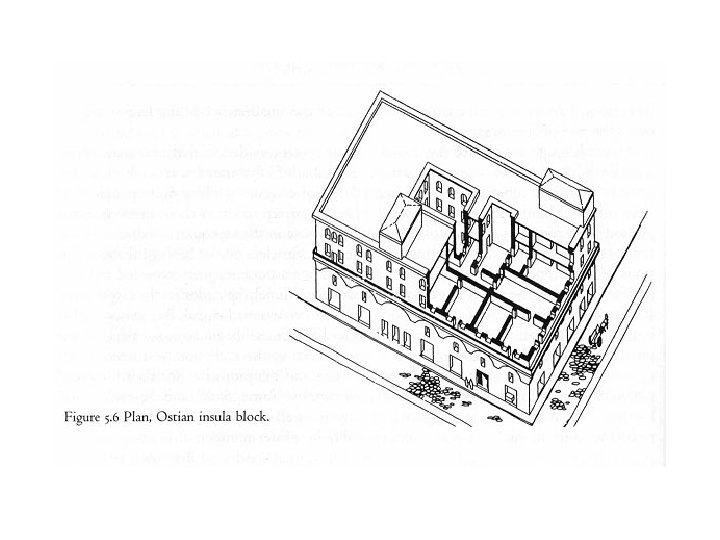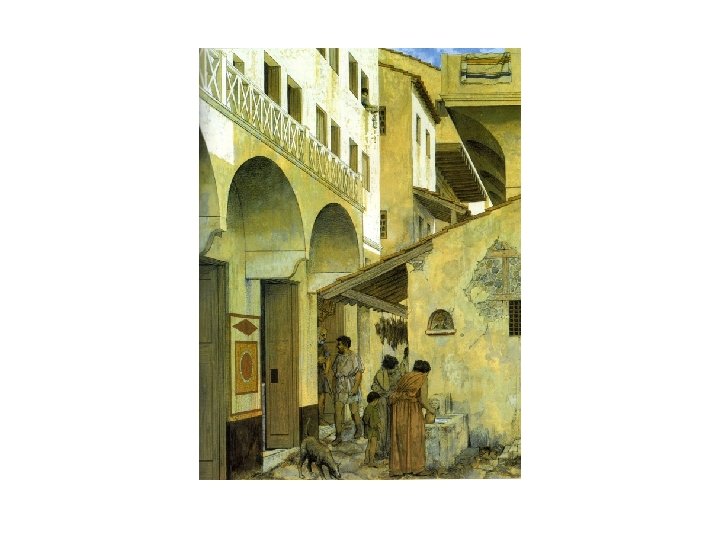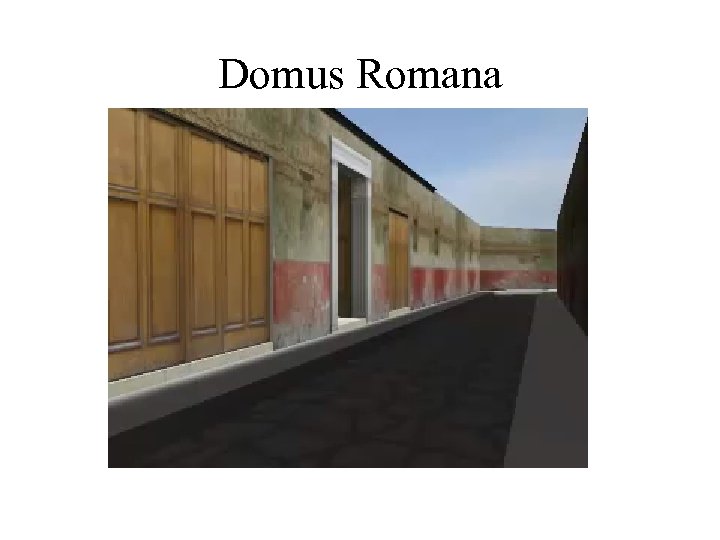0f85bbbde5e1f7eefab99b90f0db18dd.ppt
- Количество слайдов: 72
 Art & Architecture of Pompeii and Herculanium House of Pansa House of the Vettii Villa of the mysteries House of the Faun “Harbour Scene from Stabiae “the Lost Ram “Perseus and Andromeda “Death of Penthius “The Trojan horse Portrait of Terentius neo & wife Dionysiac frieze villa of the Mysteries Wall from Villa Publius Fannius Sinistor Portrait of a Woman Alexander Mosaic Nilotic scene “Sorceress & client
Art & Architecture of Pompeii and Herculanium House of Pansa House of the Vettii Villa of the mysteries House of the Faun “Harbour Scene from Stabiae “the Lost Ram “Perseus and Andromeda “Death of Penthius “The Trojan horse Portrait of Terentius neo & wife Dionysiac frieze villa of the Mysteries Wall from Villa Publius Fannius Sinistor Portrait of a Woman Alexander Mosaic Nilotic scene “Sorceress & client
 79 AD DESTRUCTION buried under 10 m of ash and remained so for 1700 yrs. A time capsule into the life of 1 st century Romans in a holiday area of Campania. Pompeians didn’t become Roman citizens until 89 BC and by 79 AD Roman culture overlay the earlier culture of the Osci and Samnite tribes. Greeks had occupied the southern part of Italy since 5 th century BC so there was an influence of Hellenism in Pompeii and Herculanium.
79 AD DESTRUCTION buried under 10 m of ash and remained so for 1700 yrs. A time capsule into the life of 1 st century Romans in a holiday area of Campania. Pompeians didn’t become Roman citizens until 89 BC and by 79 AD Roman culture overlay the earlier culture of the Osci and Samnite tribes. Greeks had occupied the southern part of Italy since 5 th century BC so there was an influence of Hellenism in Pompeii and Herculanium.
 PUBLIC BUILDINGS: Temples, Basilicas (palaces). Fine decoration and architecture PRIVATE BUILDINGS: As today, homes reflected socio-economic status: Poor lived in high rise apartments (Insulae) in 4 th century Rome there were 46000 of them housing more than ¾ of a million people. In Pompei (pop 20, 000) the poor lived in flats above shops and richer houses. Wealthy lived in Domus (stand alone houses built around an open atrium – inward looking) or luxurious villae (grand with seaviews, terrace, porticoes, large windows) on the outskirts of town or surrounding countryside overlooking the bay of Naples.
PUBLIC BUILDINGS: Temples, Basilicas (palaces). Fine decoration and architecture PRIVATE BUILDINGS: As today, homes reflected socio-economic status: Poor lived in high rise apartments (Insulae) in 4 th century Rome there were 46000 of them housing more than ¾ of a million people. In Pompei (pop 20, 000) the poor lived in flats above shops and richer houses. Wealthy lived in Domus (stand alone houses built around an open atrium – inward looking) or luxurious villae (grand with seaviews, terrace, porticoes, large windows) on the outskirts of town or surrounding countryside overlooking the bay of Naples.
 The Elite Domus • Typical elite houses evolved from Etruscan atrium-style houses, with the addition of Greek style peristyle (colonnaded) gardens. • Usually were one floor, with a main reception room (atrium) surrounded by bedrooms (cubicula), dining room (triclinium), record room/office (tablinum).
The Elite Domus • Typical elite houses evolved from Etruscan atrium-style houses, with the addition of Greek style peristyle (colonnaded) gardens. • Usually were one floor, with a main reception room (atrium) surrounded by bedrooms (cubicula), dining room (triclinium), record room/office (tablinum).
 Palatine Hill, 6 th c. BCE House
Palatine Hill, 6 th c. BCE House
 Upper rooms, often sublet to tenants. Impluvium - pool directly below roof opening Triclinium – summer dining room. Exedra–outdoor sitting or eating Peristylium – courtyard Roof opening – letting in light (and rain) with trees, fountains, statues, surrounded by Horta – garden columns (colonnade) Oecus–spare room. Culina – Kitchens Tablinum – Study. The Roman domus Atrium – visitors room Fauces – or vestibulum Triclinium – dining room. Cubiculum – bedrooms Taberna – rented out shop or workplace. Outer Wall – Domus was inward facing. DOMUS
Upper rooms, often sublet to tenants. Impluvium - pool directly below roof opening Triclinium – summer dining room. Exedra–outdoor sitting or eating Peristylium – courtyard Roof opening – letting in light (and rain) with trees, fountains, statues, surrounded by Horta – garden columns (colonnade) Oecus–spare room. Culina – Kitchens Tablinum – Study. The Roman domus Atrium – visitors room Fauces – or vestibulum Triclinium – dining room. Cubiculum – bedrooms Taberna – rented out shop or workplace. Outer Wall – Domus was inward facing. DOMUS
 Sample Plan of a Roman House (Domus) L V C A Ta Tri E vestibulum cubiculum/cubicula atrium tablinum triclinium exedra T L Al Cu P taberna latrina alae culina peristylium
Sample Plan of a Roman House (Domus) L V C A Ta Tri E vestibulum cubiculum/cubicula atrium tablinum triclinium exedra T L Al Cu P taberna latrina alae culina peristylium

 The Faucis Entrance way) (entrance Pompeii, House
The Faucis Entrance way) (entrance Pompeii, House
 Entrance, House of Menander
Entrance, House of Menander
 House of Menander, View from Fauces to Peristyle Garden
House of Menander, View from Fauces to Peristyle Garden
 The Atrium • Reception room, often with an opening in the ceiling with an impluvium below. • Contained the family gods (Lares and Penates), imagines (masks of the ancestors), symbolic marriage bed. • Women of the house (or their slaves) may have wool-worked there.
The Atrium • Reception room, often with an opening in the ceiling with an impluvium below. • Contained the family gods (Lares and Penates), imagines (masks of the ancestors), symbolic marriage bed. • Women of the house (or their slaves) may have wool-worked there.

 Atrium, House of the Silver Wedding, Pompeii
Atrium, House of the Silver Wedding, Pompeii
 The Lararium
The Lararium
 Bronze Lar, found in a SW corner of an atrium, Pompeii
Bronze Lar, found in a SW corner of an atrium, Pompeii
 Herculaneum Lararium contained lars (symbols or masks of ancestors), & penates (gods of the household
Herculaneum Lararium contained lars (symbols or masks of ancestors), & penates (gods of the household
 Loom Reconstruction
Loom Reconstruction
 The Tablinum The Master’s Study containing the family records wax tablets (Tabulae) the Household Safe (Arca) Scrolls
The Tablinum The Master’s Study containing the family records wax tablets (Tabulae) the Household Safe (Arca) Scrolls
 House of the Faun Tablinum
House of the Faun Tablinum
 Detail of the Mosaic Floor
Detail of the Mosaic Floor
 Tabula and Writing Materials
Tabula and Writing Materials
 Lucernae, Oil Lamps
Lucernae, Oil Lamps
 Scrolls in Capsa
Scrolls in Capsa
 A tablinum wall-painting
A tablinum wall-painting
 The Culina
The Culina
 Roman Kitchen, Reconstruction
Roman Kitchen, Reconstruction
 View of an Ancient Kitchen
View of an Ancient Kitchen
 Ancient Glassware
Ancient Glassware
 Roman Cooking Utensils in Bronze
Roman Cooking Utensils in Bronze
 The Latrina (Ancient Roman Toilet) Fun on a cold morning!
The Latrina (Ancient Roman Toilet) Fun on a cold morning!
 Latrina Closeup
Latrina Closeup
 Cubicula (Bedrooms)
Cubicula (Bedrooms)
 Roman Beds
Roman Beds
 Pompeii, House of the Centaur, Cubiculum Reconstruction
Pompeii, House of the Centaur, Cubiculum Reconstruction
 Triclinium (Dining Room)
Triclinium (Dining Room)
 Pompeii, Triclinium
Pompeii, Triclinium
 Dining Room - Summer
Dining Room - Summer
 Pompeii, Candelabrum
Pompeii, Candelabrum
 Triclinium, The Dining Room
Triclinium, The Dining Room
 Triclinium
Triclinium

 Roman Seating
Roman Seating
 Roman Marble Table
Roman Marble Table
 Pompeii, Bronze Table
Pompeii, Bronze Table
 Pompeii, Roman Glass
Pompeii, Roman Glass
 Roman Lamps
Roman Lamps
 Roman Couches
Roman Couches
 Peristyle Court
Peristyle Court
 Peristylium with Birdbath and Hortus
Peristylium with Birdbath and Hortus

 Peristylium with Piscina (Fish Pond)
Peristylium with Piscina (Fish Pond)
 Walled Peristylium
Walled Peristylium
 Outdoor Fountain
Outdoor Fountain
 Frontal View of the Fountain and Statue. Note the Intricate Mosaic Work
Frontal View of the Fountain and Statue. Note the Intricate Mosaic Work
 O D u o t o r L a r i u m
O D u o t o r L a r i u m
 Tintinnabulum, Pompeii
Tintinnabulum, Pompeii
 Villa at Boscoreale, Reconstruction
Villa at Boscoreale, Reconstruction
 Cubiculum, Boscoreale
Cubiculum, Boscoreale
 Herculaneum 3 Storey House
Herculaneum 3 Storey House
 Pompeii Street Plan
Pompeii Street Plan
 Pompeii Houses with Vesuvius View
Pompeii Houses with Vesuvius View

 http: //pompeya. desdeinter. net/pompeya. htm
http: //pompeya. desdeinter. net/pompeya. htm
 Villa at Settefinestre
Villa at Settefinestre
 Settefinestre House Plan
Settefinestre House Plan
 Houses of the Poorer working people lived in rooms behind or above their places of work. The elite often rented out the front rooms of their houses, on either side of the entrances, for use as shops, workrooms, or restaurants, often with living space included. The lower classes also lived in apartment buildings (insulae).
Houses of the Poorer working people lived in rooms behind or above their places of work. The elite often rented out the front rooms of their houses, on either side of the entrances, for use as shops, workrooms, or restaurants, often with living space included. The lower classes also lived in apartment buildings (insulae).
 Insulae
Insulae



 Domus Romana
Domus Romana
